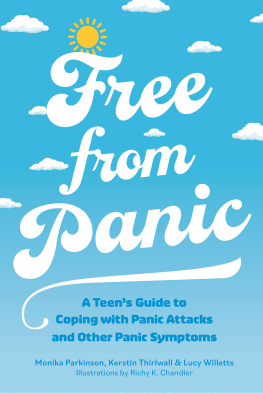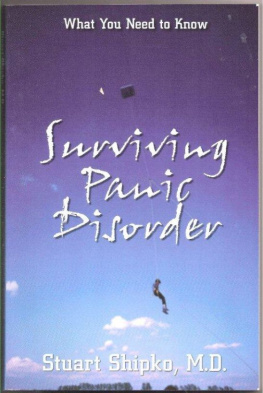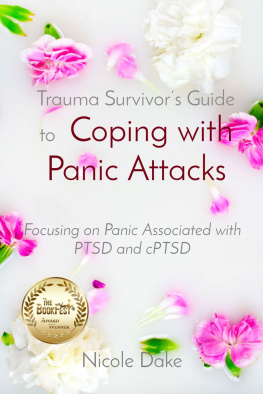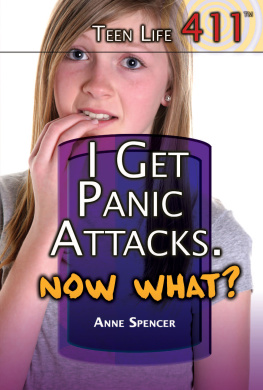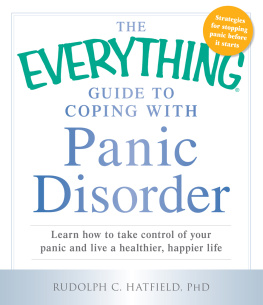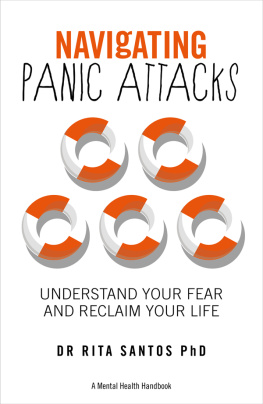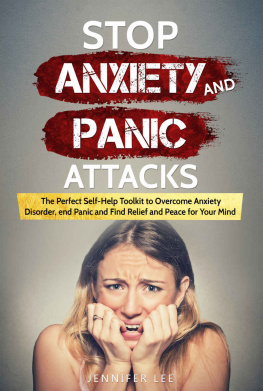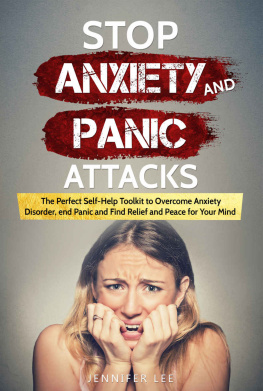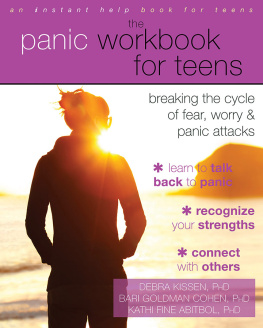Contents
Page list

by the same author
Can I Tell You About Anxiety?
Lucy Willetts and Polly Waite
Illustrated by Kaiyee Tay
ISBN 978 1 84905 527 7
eISBN 978 0 85700 967 8
of related interest
Starving the Anxiety Gremlin
A Cognitive Behavioural Therapy Workbook on Anxiety Management for Young People
Kate Collins-Donnelly
ISBN 978 1 84905 341 9
eISBN 978 0 85700 673 8
Were All Mad Here
The No-Nonsense Guide to Living with Social Anxiety
Claire Eastham
Foreword by Natasha Devon MBE
ISBN 978 1 78592 082 0
eISBN 978 1 78450 343 7
My Anxiety Handbook
Getting Back on Track
Sue Knowles, Bridie Gallagher, and Phoebe McEwen
Illustrated by Emmeline Pidgen
ISBN 978 1 78592 440 8
eISBN 978 1 78450 813 5
10 Minutes to Better Mental Health
A Step-by-Step Guide for Teens Using CBT and Mindfulness
Lee David and Debbie Brewin
Illustrated by Rebecca Price
ISBN 978 1 78775 556 7
eISBN 978 1 78775 570 3
FREE FROM
PANIC
A TEENS GUIDE TO COPING WITH
PANIC ATTACKS AND PANIC SYMPTOMS
Monika Parkinson,
Kerstin Thirlwall
and Lucy Willetts
Illustrated by Richy K. Chandler

First published in Great Britain in 2022 by Jessica Kingsley Publishers
An imprint of Hodder & Stoughton Ltd
An Hachette Company
Copyright Monika Parkinson, Kerstin Thirlwall and Lucy Willetts 2022
Illustrations Richy K. Chandler 2022
All rights reserved. No part of this publication may be reproduced, stored in a retrieval system, or transmitted, in any form or by any means without the prior written permission of the publisher, nor be otherwise circulated in any form of binding or cover other than that in which it is published and without a similar condition being imposed on the subsequent purchaser.
A CIP catalogue record for this title is available from the British Library and the Library of Congress
ISBN 978 1 78775 818 6
eISBN 978 1 78775 819 3
Jessica Kingsley Publishers policy is to use papers that are natural, renewable and recyclable products and made from wood grown in sustainable forests. The logging and manufacturing processes are expected to conform to the environmental regulations of the country of origin.
Jessica Kingsley Publishers
Carmelite House
50 Victoria Embankment
London EC4Y 0DZ
www.jkp.com
The information contained in this book is not intended to replace the services of trained medical professionals or to be a substitute for medical advice. You are advised to consult a doctor on any matters relating to your health, and in particular on any matters that may require diagnosis or medical attention.
Contents
Chapter 1
Freedom Is Already
Yours and We Will
Show You Why
Hello and welcome
We are pleased you are reading this book in order to help you feel less overwhelmed by panic. Our hope is that you find this book easy to use and useful for both your current situation and future experiences. Whether you are a young person who is experiencing panic symptoms or a parent/carer or professional who wants to support a young person to feel better, it is our intention to give you a range of ideas and ways to gain freedom from panic.
We would like you to discover that freedom from panic is ALREADY YOURS and we will show you why and how. Many people often get caught up with doing a lot of different things to control and reduce their panic, which can keep the problem going and even make things much worse. Perhaps the most surprising thing that you will discover in this book is that the more you DO NOTHING ABOUT THE PANIC, the better you will feel. We hope to show you how to do nothing, drop the effort and let go of the need to control!
We refer to panic symptoms, anxiety and anxiety symptoms or sensations throughout this book. Although medical and diagnostic literature often defines these terms in particular ways, unless stated, we are not referring to these specific criteria in this book. Instead, we use language that includes panic, panic symptoms, anxiety and anxiety symptoms or sensations because we have found that these are commonly used by people to describe their experiences of panic. We would like you to use the word or words that best describe your feelings and experiences, without making things complicated.

What this book includes and how to use it
The content in this book is based on many years of our combined clinical practice with young people and families, as well as evidence-based approaches about helpful interventions. Having said that, we wont be giving you a ton of references or additional things to read, and we aim to provide our knowledge in the simplest and most usable way for you to apply quickly and effectively. You will notice that at the end of each chapter we have included a section called Questions to get you thinking. Of course, it is up to you whether you complete these sections or not. In our experience, weve seen that if a person is able to set aside a few minutes to reflect on these questions, and even make some notes to refer to, this tends to increase the persons understanding of their symptoms and reactions and often leads to better results.
We also want to emphasize the importance of reading this book in the order it is presented, rather than dipping in and out of chapters. This is because we cover varying approaches, and there is a method in applying them in the order discussed. Following this structure helps to establish the building blocks for letting go of panic in an effective way. In particular, the ideas discussed in then go into more practical challenges with additional ideas to help you develop more helpful perspectives and responses. Our message is that you need to get to know your panic, your feelings and your body first before you can confidently let go of your panic symptoms in more specific situations.
What is panic?
Panic is no laughing matter. People often use the phrase dont panic in a light-hearted way, but for those individuals who experience severe panic symptoms or panic disorder, this is much easier said than done. Panic symptoms, or a full panic attack, can often feel overwhelming and extremely frightening. Many people report feeling or thinking that they are about to collapse or die. Experiencing panic symptoms can make a person feel anxious a lot of the time, even when the panic has subsided, and it can lead to avoidance of certain situations, people or places and start to have a negative impact on many areas of life.
It is our hope that by the time you finish reading this book and understand some of the principles, you will be completely convinced, even whilst still perhaps experiencing some symptoms, that:
There is nothing wrong with you and this will pass.
When people talk about panic, they are usually referring to a number of physiological or bodily symptoms that can be experienced as a result of anxiety. For some people, the panic feelings are much more thought based, coming up as streams of anxious thoughts or distressing images. But for the most part, panic is usually experienced physically in our bodies. Panic symptoms can be very different for different individuals. On the next page we have put together a list of common symptoms that have been described by people of different ages.

